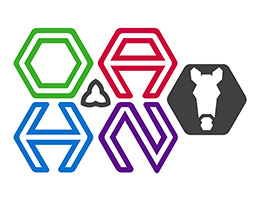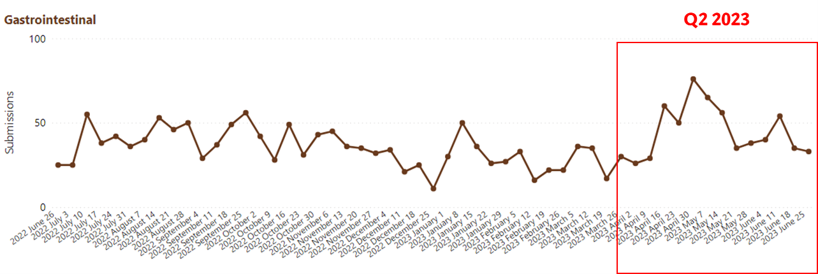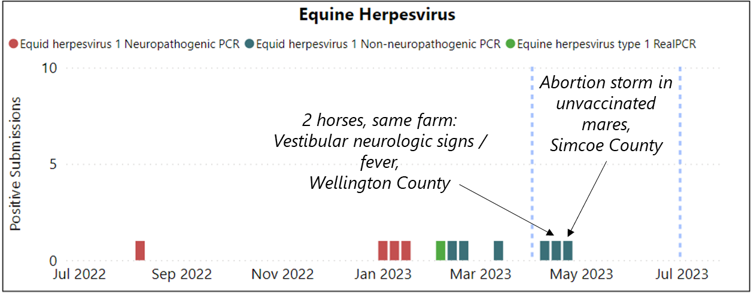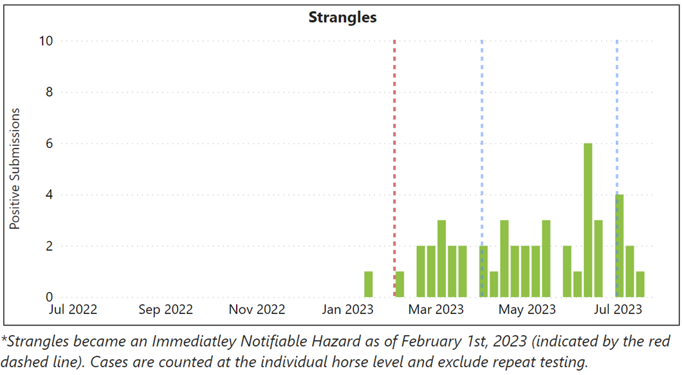Ontario Animal Health Network (OAHN)
Equine Expert Network
Quarterly Veterinary Report
BITS ‘N SNIPS (or “things we talked about on the network call”)
Colic due to moldy feed
Mycotoxins aren’t generally on the differential list when examining a horse for colic, but when you are confronted by a significant number (e.g. 50%) of horses in the barn who are similarly affected, as happened to network member, Dr. John Donovan’s practice, one should be looking at things common to all (e.g feed, forage, water etc.).
Mycotoxins are toxic metabolites produced by fungi, predominantly of the Fusarium, Penicillium and Aspergillus genera. Of the five most common mycotoxins in equine feed and forages (aflatoxins, ochratoxins, fumonisins, trichothecenes (e.g. deoxynivalenol or DON) and zearalenone), DON, aflatoxin and fumonisin have been shown to alter the epithelial integrity of intestinal epithelium by inhibiting intracellular junction protein synthesis1. As a result, these mycotoxins have been associated with weight loss and colic signs in horses. One challenge is that researchers haven’t determined the dose of mycotoxin required to cause these signs and further, how to accurately determine the dose of mycotoxin fed from forage, in particular, since bales from different parts of a field can have widely varying levels. Thus the qualitative determination of toxins rather that the quantified amount in hay may be more relevant for outbreak scenarios2. Presently, the identification of mycotoxins (e.g. DON) above 2ppm are considered relevant as well as the presence of mycotoxin in feed samples from sick animals compared to heathy ones. For example Barnett et al. found that farms with suspected feed-related colics had feed samples with DON in 100% of colic cases and 70% of controls but T-2 toxin and ZEN in 100% of the colic group and none in the control group3. The CFIA permits up to 5ppm (5 mg/kg) of DON in livestock feed including hay cubes4. No studies determining an allowable level above which equine health and performance would be impacted have been performed, however. Hay from hay suppliers are not evaluated for mycotoxin levels unless done so by the buyer.
Mycotoxins can be produced under environmental conditions which allow fungi to grow on crops in the field, at harvest, in storage or under feed processing5. For example, a wet growing season followed by cool weather may lead to Fusarium and its mycotoxins present in grains, or the increased likelihood of fungi growth when field-dried hay is not cured properly. Raymond et al found higher levels of DON, zearalenone and T-2 toxin in forages compared to grain concentrates during a field study of performance horse farms in Ontario6. Not surprisingly, they also found that the subjective appraisal of hay by horse owners is unreliable in terms of mycotoxin, mold and actinomycete contamination. Forages with a low level of measurable mold can still contain significant amounts of mycotoxin. However, if feed/forage is visibly moldy, mycotoxin levels are likely high. Further, the composition of the concentrate can have an effect on mycotoxin level. For example grains, such as rolled oats, may have higher levels of mycotoxin than pelleted concentrates due to the heating process for pellet formation7. The CFIA has reported higher mycotoxin levels in single ingredient feeds (namely barley, corn and wheat)8. Mycotoxin contamination with DON seems to be more prevalent east of the prairies8. Other methods feed manufacturers use to control mycotoxins include binding with clays (bentonite, zeolite) or using yeast. For a review of the various strategies to control mycotoxin contamination in the feed industry see: Invited review: Remediation strategies for mycotoxin control in feed. Invited review: Remediation strategies for mycotoxin control in feed. Mycotoxins in forages can also be inhibited by heat treatment however heat of 150⁰C is required and commercial hay steamers may not reach that temperatures2. That being said, one company states their commercial hay steamer will achieve temperatures higher than 100⁰C and will kill most molds/fungi which produce mycotoxins.
Along with causing farm issues with colic, mycotoxins have also been associated with outbreaks of liver disease in horses2. Durham was unable to show a cause an effect however 10 different forage mycotoxins were found exclusively on farms with horses diagnosed with liver disease.
Interestingly, as with the intestinal epithelial lining, Van Cleenput et al. has shown that DON exposure via grain, hay and /or bedding (straw or hay) disrupts the respiratory epithelial lining and may predispose horses to EHV-1 infections10.
For a review of the various strategies to control mycotoxin contamination in the feed industry see: Invited review: Remediation strategies for mycotoxin control in feed. Liu M, Zhao L, Gong G, Zhang L, Shi L, Dai J, Han Y, Wu Y, Khalil MM, Sun L.J Anim Sci Biotechnol. 2022 Jan 28;13(1):19. doi: 10.1186/s40104-021-00661-4. PMID: 35090579 Free PMC article.
Further resources:
Ergot alkaloid toxicity Equine Veterinary Report – Q1 2023 – Ontario Animal Health Network (oahn.ca)
Fungal mycotoxins of grain and their potential effect on horses | ontario.ca
Residue Testing Services | Agriculture and Food Laboratory (uoguelph.ca)
2022 Ontario Grain Corn Ear Mould and Deoxynivalenol (DON) Mycotoxin Survey – Field Crop News
How to improve the hygienic quality of forages for horse feeding.Séguin V, Garon D, Lemauviel-Lavenant S, Lanier C, Bouchart V, Gallard Y, Blanchet B, Diquélou S, Personeni E, Ourry A.J Sci Food Agric. 2012 Mar 15;92(4):975-86
References
1. Bracarense, A.-P.F., Lucioli, J., Grenier, B., Pacheco, G.D., Moll, W.-D., Schatzmayr, G., Oswald, I.P., 2012. Chronic ingestion of deoxynivalenol and fumonisin, alone or in interaction, induces morphological and immunological changes in the intestine of piglets. Br. J. Nutr. 107, 1776–1786.
2. Durham AE. Association between forage mycotoxinsand liver disease in horses.J Vet Intern Med. 2022 Jul;36(4):1502-1507.
3. Barnett, D.T., R.A. Mowery, W.M. Hagler, D.G. Bristol and R.A. Mansmann. 1995. The correlation of selected mycotoxins to the incidence of colic in horses. Proc. 14thEquine Nutrition and Physiology Symposium, pp. 242-247.
5. Newman, K. Mycotoxins in equine diets: the difference between win, place and show? Mycotoxins in equine diets: the difference between win, place and show? – Engormix
6. Raymond, S.L., T.K. Smith, E.F. Curtis and A.F. Clarke. 2001. An investigation of the levels of selected Fusarium mycotoxins and the degree of mold contamination found in the diets of performance horses in Ontario. Equine Nutrition and Physiology Society Symposium, Lexington, KY, USA, May 30- June 2, 86-92
7. Intemann S, Reckels B, Schubert DC, Wolf P, Kamphues J, Visscher C. The Microbiological Quality of Concentrates for Horses-A Retrospective Study on Influencing Factors and Associations with Clinical Symptoms Reported by Owners or Referring Vets. Vet Sci. 2022 Aug 5;9(8):413
9. https://www.haygain.ca/pages/research-1
10. Van Cleemput J, Poelaert KCK, Laval K, Van den Broeck W, Nauwynck HJ Deoxynivalenol, but not fumonisin B1, aflatoxin B1 or diesel exhaust particles disrupt integrity of the horse’s respiratory epithelium and predispose it for equine herpesvirustype 1infection..Vet Microbiol. 2019 Jul;234:17-24.
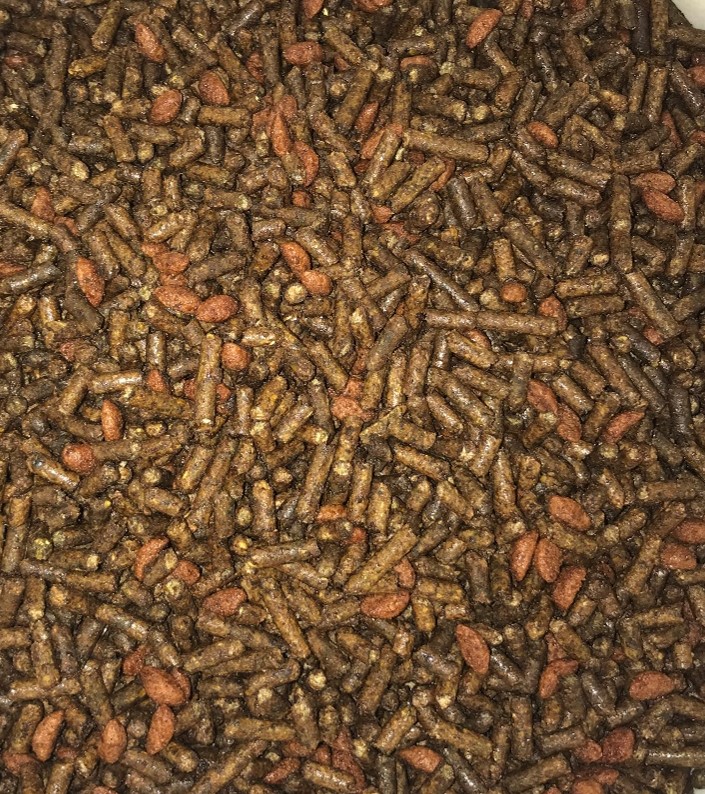
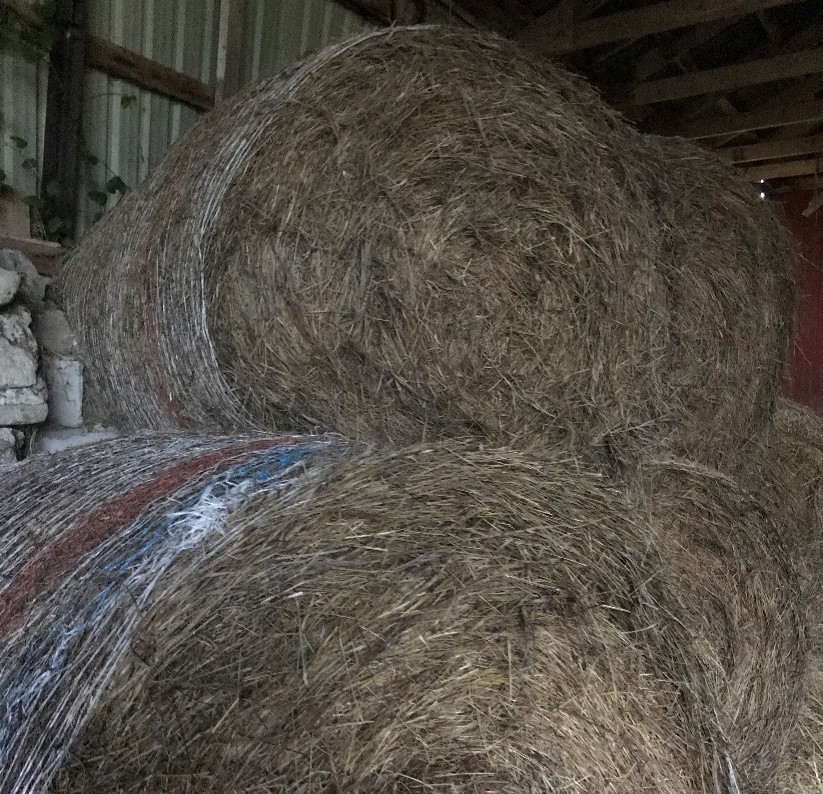
Network Member Reports
| Southwestern Region
(Melissa McKee) |
We were testing a lot for Strangles this quarter as many farm owners want to test for it. One challenge is that there is a lack of standardization across practices in terms of testing , particularly for clinically normal horses changing barns. Racehorse musculoskeletal issues were higher in Q2 particularly with the two-year olds now racing. There were also a number of horses with hives, as well as numerous gas/idiopathic colics due to the weather and of couple of young mares with udder development presumably due to dietary phytoestrogens. We saw fewer serious eye cases and not many diarrhea or laminitis cases. |
| Western Region
(Tara Foy) |
We had many foals with upper respiratory disease. On one farm, Bordetella bronchiseptica was identified as the causal agent. We dealt with a case of Strangles and have been fielding owners’ concerns with Strangles generally. We saw a typical number of colic cases, a few fevers of unknown origin which responded to NSAIDS, and several ocular cases which consisted mainly of mild corneal ulcers and conjunctivitis. There were a couple of cases of hemorrhage from the urethra/penis; one is a suspected urethral tear and the other was a penile tumour that had eroded into the highly vascular penile tissue. A number of horses were also treated for esophageal obstructions (chokes) which were generally related to feed / management changes. |
| Eastern Ontario
(John Donovan) |
We had an interesting quarter. We attended to 47 colics starting in April, the majority of which were gas colics but we saw an increase in impaction colics. All were managed medically except for 3 which were managed surgically successfully. We had one facility where at least 50% of the horses had colic within a 3-day time period. They found extreme mold contamination of the grain source. With a change of the grain source, the number of colic cases resolved. There was a case of influenza in a show jumping barn with 50% positive for influenza . They had sick horses with high fevers for a week to 10 days which responded well to supportive care. Rhinitis B virus was also present on some of the respiratory panels. We also saw some foals with failure of passive transfer, contracted tendons and angular limb deformities, some of which required periosteal stripping. One foal was diagnosed with Salmonella Newport infection. It presented at 48 hours of age, dehydrated, recumbent, shocky, and nonresponsive. It was aggressively treated and survived. A number of horses were diagnosed with laminitis this spring . We have had two to 3 cases of week of Potomac Horse Fever since July 1 . One neighbouring practice had two PHF-confirmed cases die . In terms of PHF vaccination, we believe that we have less severe clinical signs in vaccinated horses. We have diagnosed very few horses with Lyme disease in Q2 but we have had a couple of Anaplasma cases which responded to intravenous oxytetracycline. Most of these cases fall into the Fever of Unknown Origin category. We also saw some 2 to 3 year olds with upward fixation of the patellas, a couple of horses with coffin bone fractures, some horses with severe tendon issues and one with a deep digital flexor tendon tear. One of our veterinarians administered an intranasal vaccine to a clinically normal and healthy horse and the horse immediately collapsed and seizured. This may have been a case of vasovagal (neurocardiogenic) syncope. |
| Ontario Veterinary College
(Memo Arroyo) |
We admitted a number of colics this quarter with a spike in colitis cases. We had some PHF cases, some of which were fatal. We’ve also admitted a number of horses with Strangles, some of which are long term cases in hospital which are having difficulty clearing the organism. We also admitted some older (2 month old) foals with pneumonia and joint infections in which we cultured Actinobacillus sp. We also admitted a donkey from the Niagara region which was diagnosed with cutaneous habronemiasis and severe dermatitis. This is a recurrent issue for this donkey . He had very infected, ulcerated lesions with big fleshy lumps on both sides of his fetlocks. The Habronema larvae was visualized in biopsies of the lesions.
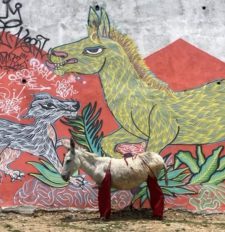 With PHF research we are looking at definitive hosts. We have found neorickettsia in muskrats, racoons, skunks and in larvae from ponds/rivers where there have been previous cases of PHF on the property. On one farm that has had historical PHF cases, many of the larvae from the pond are positive for neorickettsia. We should also be doing more surveillance for neorickettsia in foals as we have treated a couple of clinical foals. |
|
|
| Hannah Golightly
Alison Moore (OMAFRA) |
•Equine Syndromic Surveillance
Graphs of disease syndromes based on samples sent for testing to the Animal Health Laboratory. This information is compiled based on the type of sample, test requested and key terms included in the submission history (if provided).
Immediately Notifiable Diseases: Case Reports to OMAFRA. April to June 2023 West Nile virus No equine cases were reported in Q2. Equine Herpesvirus -1
Strangles Please follow Outbreaks | Equine Disease Communication Center (equinediseasecc.org) for reported outbreaks.
|
Syndromic and AHL Laboratory Data Surveillance Dashboard
Survey – Key points
- 29 Counties represented
- 75% equine, 15% mixed animal, 5% equine and small animal and 5% equine and food animal clinics responded.
- 21% of veterinarians reported working with Performance/Competition/Show horses, 21% pleasure/backyard horses, 17% foals, breeding and young stock, 12% racehorses, 11% draft horses, 10% mules/donkeys, 6% horse uses for transportation and 1% polo ponies.
- Increase in (foal) Rhodococcus equi infection, diarrhea, fever of unknown origin, neonatal hypoxic-Ischemic-encephalopathy ; (adult) Strangles, asthma, viral URT outbreak, Potomac Horse Fever, allergic dermatitis, EHV, smoke-related respiratory disease, resistant uterine infections, EMS, PPID, Anaplasmosis, Lyme disease, fever of unknown origin, cellulitis/lymphangitis, vaccine reactions.
- New conditions or those without a diagnosis:
- One QH yearling with Pneumonia characterized by atelectic ventral lung
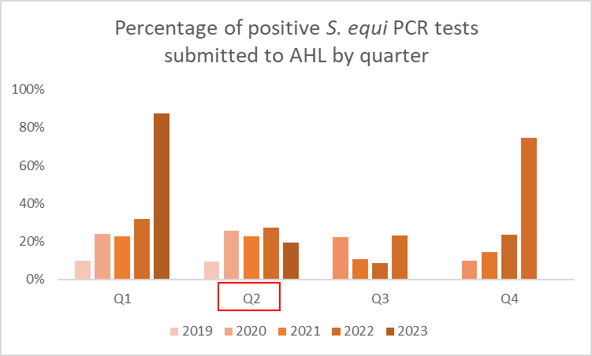
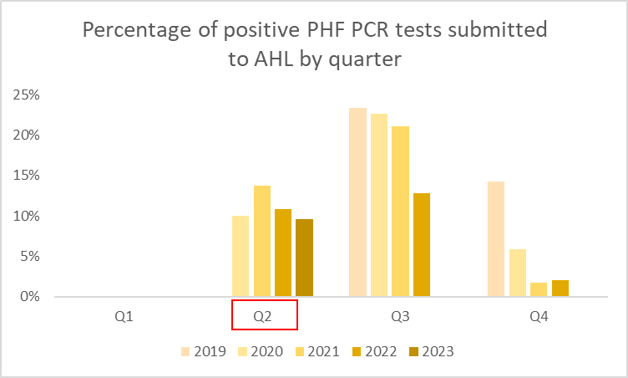
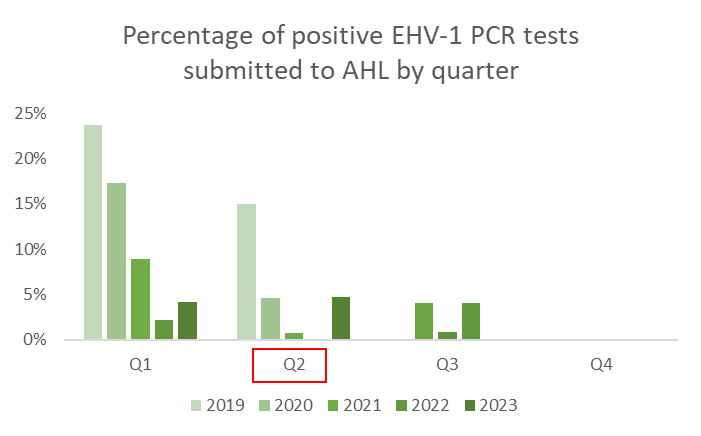
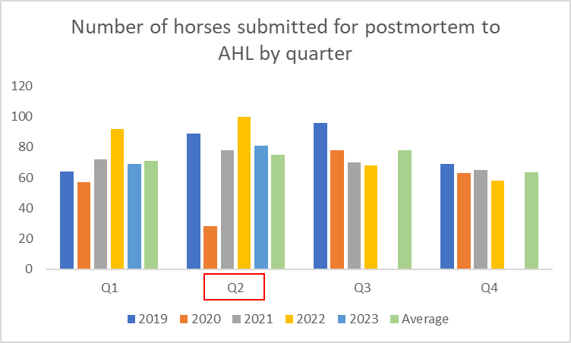
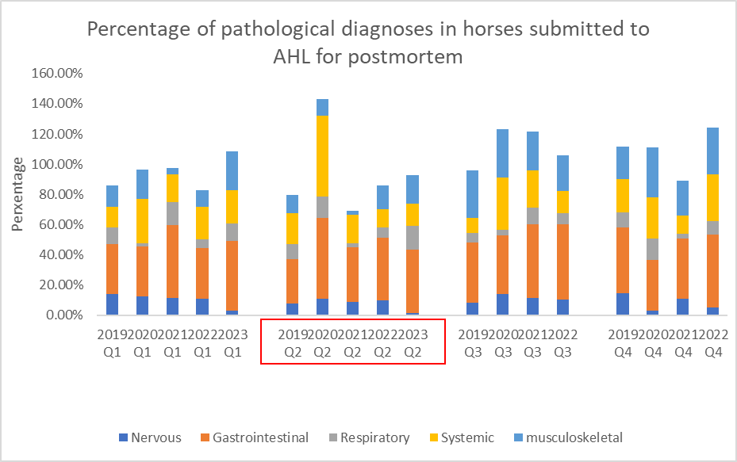
Equine research from Ontario and around the world
Researchers in Ontario
Nontuberculous Mycobacteria in Horses: A Narrative Review. Li L et al. .Vet Sci. 2023 Jul 6;10(7):442. Free PMC article. Review.
Prevalence of equine parvovirus-hepatitis in healthy broodmares in Ontario, Canada. Papapetrou MA et al. .Can J Vet Res. 2023 Jul;87(3):169-175.
Relationship between quantitative real-time PCR cycle threshold and culture for detection of Streptococcus equi subspecies equi. Weese JS et al. . Can Vet J. 2023 Jun;64(6):549-552.
Human Injuries Associated with the Transport of Horses by Road. Riley CB et al. .Animals (Basel). 2023 May 10;13(10):1594. Free PMC article.
Postmortem examination of equids >1-year-old with enterotyphlocolitis in Ontario: a retrospective descriptive study. Zakia LS et al. .J Vet Diagn Invest. 2023 Jul;35(4):349-353 Free PMC article. Review.
Henipavirus zoonosis: outbreaks, animal hosts and potential new emergence. Li H et al. .Front Microbiol. 2023 Jul 17;14:1167085. Free PMC article. Review.
Researchers around the world
Assessment of calcium, phosphorus, magnesium, vitamin D and PTH levels in sera of lame horses. Etemadi F et al.. Vet Med Sci. 2023. Free article.
Equine synovial sepsis laboratory submissions yield a low rate of positive bacterial culture and a high prevalence of antimicrobial resistance. Pearson GB et al. .Am J Vet Res. 2023 Jul 17;84(8 Free article.
Expression of genes with biomarker potential identified in skin from DSLD-affected horses increases with age. Roberts JH et al. PLoS One. 2023 Jul 14;18(7): Free PMC article.
Racehorse welfare across a training season. Annan R et alVet Sci. 2023 Jun 28;10:1208744 Free PMC article.
Thoroughbred Racehorses in Hong Kong Require Vitamin D Supplementation to Mitigate the Risk of Low Vitamin D Status. Dosi MCM et al. .Animals (Basel). 2023 Jun 29;13(13):2145. Free PMC article.
Between Leisure and Pressure-Veterinarians’ Attitudes towards the Care of Competition Horses in Germany, Austria and Switzerland. Springer S et al. Animals (Basel). 2023 Jun 27;13(13):2126. Free PMC article.
Saddle Thigh Block Design Can Influence Rider and Horse Biomechanics. Murray R et al. Animals (Basel). 2023 Jun 27;13(13):2127Free PMC article.
Shoe configuration effects on third phalanx and capsule motion of unaffected and laminitic equine hooves in-situ. Aoun R et al. .PLoS One. 2023 May 8;18(5):e0285475. Free PMC article.
The effects of obesity and insulin dysregulation on mare reproduction, pregnancy, and foal health: a review. Hallman I Front Vet Sci. 2023 Apr 20;10:1180622. Free PMC article. Review.
Evaluation of thermoregulation of horses (Equus caballus) submitted to two methods of post-exercise cooling, in hot and humid climate conditions, in the Eastern Amazon. Lisboa BRF et al. Front Vet Sci. 2023 Apr 17;10:1150763. Free PMC article.
Equine bronchial epithelial cells are susceptible to cell entry with a SARS-CoV-2 pseudovirus but reveal low replication efficiency. Legere RM et al .Am J Vet Res. 2023 Jul 18:1-11. Free article.
Efficiency of round bale feeders: comparison of Tombstone versus Hay Saver. Hyde KA et al. J Equine Sci. 2023 Jun;34(2):51-54. Free PMC article.
The effect of acute equine temporomandibular joint inflammation on response to rein-tension and kinematics. Reisbig NA et al. .Front Vet Sci. 2023 Jun 19;10:1213423. Free PMC article.
Clinical presentation and outcome of gastric impactions with or without concurrent intestinal lesions in horses. Talbot SE et al. J Vet Intern Med. 2023 Jul-Aug;37(4):1544-1551. Free PMC article.
Evaluation of the effects of medium-term (57-day) omeprazole administration and of omeprazole discontinuation on serum gastrin and serum chromogranin A concentrations in the horse. Clark B et al. J Vet Intern Med. 2023 Jul-Aug;37(4):1537-1543. Free PMC article.
Comparison of West Nile Virus Disease in Humans and Horses: Exploiting Similarities for Enhancing Syndromic Surveillance. Schwarz ER et al. Viruses. 2023 May 24;15(6):1230. Free PMC article. Review.
Investigation of the Frequency of Detection of Common Respiratory Pathogens in Nasal Secretions and Environment of Healthy Sport Horses Attending a Multi-Week Show Event during the Summer Months. Pusterla N et al. Viruses. 2023 May 24;15(6):1225 Free PMC article.
Prevalence of Latent Equid Herpesvirus Type 1 in Submandibular Lymph Nodes of Horses in Virginia. Saklou N et al. Pathogens. 2023 Jun 7;12(6):813. Free PMC article.
Co-Occurrence of Severe Equine Asthma and Palatal Disorders in Privately Owned Pleasure Horses. Kozłowska N et al. .Animals (Basel). 2023 Jun 12;13(12):1962. Free PMC article.
Application of the Ridden Horse Pain Ethogram to 150 Horses with Musculoskeletal Pain before and after Diagnostic Anaesthesia. Dyson S, Pollard D.Animals (Basel). 2023 Jun 9;13(12):1940. doi: 10.3390/ani13121940.PMID: 37370450 Free PMC article.
Novel Expression of GLUT3, GLUT6 and GLUT10 in Equine Gluteal Muscle Following Glycogen-Depleting Exercise: Impact of Dietary Starch and Fat. Valberg SJ et al. Metabolites. 2023 Jun 1;13(6):718. Free PMC article.
Apparent treatment failure of praziquantel and pyrantel pamoate against anoplocephalid tapeworms. Nielsen MK. Int J Parasitol Drugs Drug Resist. 2023 Aug;22:96-101. Free PMC article.
Equine Herpesvirus-1 Outbreak During a Show-Jumping Competition: A Clinical and Epidemiological Study. Couroucé A et al. ,.J Equine Vet Sci. 2023 Jun 18;128:104869.
Fatty acid fingerprints in bronchoalveolar lavage fluid and its extracellular vesicles reflect equine asthma severity. Höglund N, et al. Sci Rep. 2023 Jun 17;13(1):9821 Free PMC article.
Lactation in horses. Reiter AS, Reed SA.Anim Front. 2023 Jun 14;13(3):96-100. Free PMC article. Review. No abstract available.
Berbamine, a bioactive alkaloid, suppresses equine herpesvirus type 1 in vitro and in vivo. Li Z et al. Front Vet Sci. 2023 May 25;10:1163780. Free PMC article.
Exercise-related changes in the anabolic index (testosterone to cortisol ratio) and serum amyloid A concentration in endurance and racehorses at different fitness levels. Grzędzicka J, Dąbrowska I, Malin K, Witkowska-Piłaszewicz O.Front Vet Sci. 2023 Apr 17;10:1148990. doi: 10.3389/fvets.2023.1148990. eCollection 2023.PMID: 37138908 Free PMC article.
Circulating miR-146b and miR-27b are efficient biomarkers for early diagnosis of Equidae osteoarthritis. Yassin AM et al. , Sci Rep. 2023 May 17;13(1):7966. Free PMC article.
Ultrasonography-based diagnosis of hemorrhage syndrome in adipose tissues in the crest of the neck of heavy horse breeds. Harada K et al. J Vet Med Sci. 2023 Jun 13;85(6):637-641 Free PMC article.
Validation of Alogo Move Pro: A GPS-Based Inertial Measurement Unit for the Objective Examination of Gait and Jumping in Horses. Guyard KC et al. .Sensors (Basel). 2023 Apr 22;23(9):4196. Free PMC article.
Moringa oleifera as a Natural Alternative for the Control of Gastrointestinal Parasites in Equines: A Review. Elghandour MMMY et al. Plants (Basel). 2023 May 8;12(9):1921. Free PMC article. Review.
Equine Behavioural and Physiological Responses to Auditory Stimuli in the Presence and Absence of Noise-Damping Ear Covers. Hole C et al. Animals (Basel). 2023 May 8;13(9):1574. Free PMC article.
Changes in Management Lead to Improvement and Healing of Equine Squamous Gastric Disease. Kranenburg LC et al. .Animals (Basel). 2023 Apr 28;13(9):1498. Free PMC article.
Comparison of Radiography and Computed Tomography for Evaluation of Third Carpal Bone Fractures in Horses. Steel C et al. .Animals (Basel). 2023 Apr 25;13(9):1459. Free PMC article.
OAHN has compiled resources for pet and livestock owners on wildfire emergency management. Please go here to view them.
Interested in knowing more about the Rabbit Hemorrhagic Disease Surveillance Project for both pet rabbits and wild rabbits in rehab facilities? Follow the Alternative Species Network project page or contact Dr. Reid alexandra.reid@ontario.ca.
ResearchONequine.ca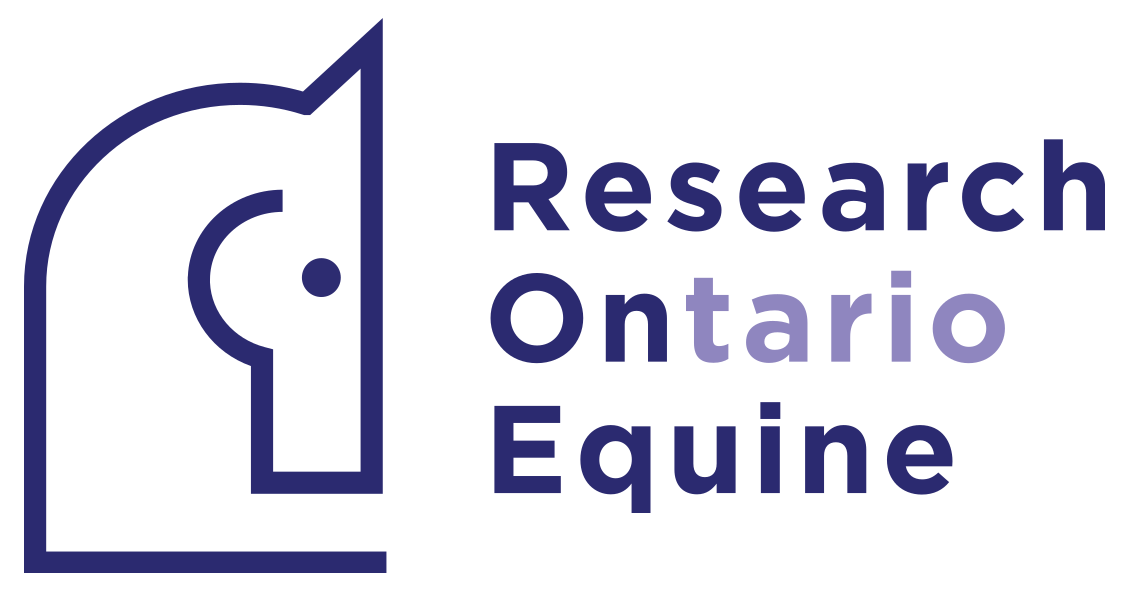 is a website developed by the Ontario Animal Health Network equine network to help increase research awareness and to connect researchers from academia, industry and government with the ultimate goal of improving the lives of all equines. It was supported by OAHN and the Ontario Association of Equine Practitioners.
is a website developed by the Ontario Animal Health Network equine network to help increase research awareness and to connect researchers from academia, industry and government with the ultimate goal of improving the lives of all equines. It was supported by OAHN and the Ontario Association of Equine Practitioners.
